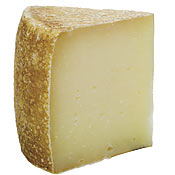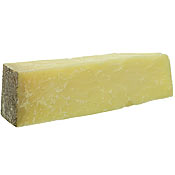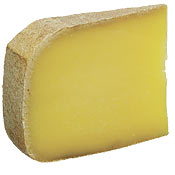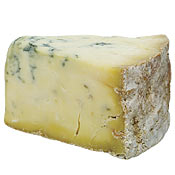You can barely throw a wheel of Brie in this town these days without hitting a restaurant cheese course. But what if you want to serve a little of the stinky stuff on your own—say, for your exceedingly tasteful holiday dinner party? We asked Max McCalman, the fromagier at Artisanal and Picholine and the author of the recently published Cheese: A Connoisseur’s Guide to the World’s Best, to create the perfect holiday cheese plate. McCalman chose different types—goat’s milk, sheep’s milk, and cow’s milk—for variety. Although it’s generally a good idea to mix soft and hard cheeses, “I focused on the firmer cheeses—they can be left out on the side while I’m fussing with other cooking challenges,” says McCalman.
To begin, McCalman recommends a Garrotxa, a Catalan goat’s-milk cheese (about $24 per pound); its mild, creamy taste is an excellent choice after a big meal. “This time of year,” says McCalman, “it’s at its peak.” Two good goat’s-milk alternatives, McCalman says, are Bouc Emissaire (about $24 per pound) from Quebec and French Chabichou (about $12.99 each).

McCalman’s next choice is Swiss Flixer, an alpine sheep’s-milk cheese from Canton Graubünden (about $39.50 per pound). Dense and relatively mild, with a delicate, slightly sweet chestnut flavor, “it’s one of the holy-grail cheeses,” says McCalman. A seasonal cheese from a small producer, Swiss Flixer can be hard to find. Good alternatives, McCalman says, are the French Abbaye de Bellocq (about $22 per pound) and the Vermont Shepherd (about $26 per pound).

Next, McCalman recommends an American Fiscalini Farmstead bandage-wrapped Cheddar (about $20 per pound), an aged cow’s-milk cheese. Its firm, crumbly texture and nutty, slightly smoky taste “remind me of the best farmhouse Cheddars of England—not too acidic or sharp, but well balanced,” says McCalman. Good alternatives: Britain’s Montgomery’s Cheddar (about $28 per pound) and Cabot clothbound Cheddar from Vermont (about $24 per pound).

McCalman’s next selection is the artisanal farmhouse cheese from Uplands Pleasant Ridge Reserve in Wisconsin, a straw-colored cow’s-milk cheese (about $27 per pound); this one twice received Best in Show at the American Cheese Society’s Conference. It’s a mountain-style cheese (cooked and pressed, which concentrates the flavors) that delivers “a nutty flavor with a little sweetness, and a slightly crystalline texture,” says McCalman. Good alternatives: Italian Piave (about $12.75 per pound) and French Comté (about $16 per pound).

To round out the course, McCalman recommends “the king of English cheeses”—a Stilton (right) from the Colston Bassett dairy in Nottingham (about $21 per pound). A signature mineral tang and gentle salting accompany this smooth, buttery, mellow cow’s-milk blue. The cheeses are made from summer milk and matured for three to nine months, so they’re best in fall and winter. “They’re outstanding,” McCalman says, “with or without port.” Good alternatives: Bayley Hazen Blue from Vermont (about $19 per pound) and Massachusetts’ Great Hill Blue (about $17 per pound).
Cheese 101
• Ask your cheesemonger what’s in peak condition—freshness is key.
• Buy small amounts, for eating the same day or the next; cheese needs to be kept cool and moist, and refrigerators can dry it out.
• Don’t keep cheese in plastic, which traps air and makes it sweat; wrap it in wax or parchment paper.
• Serve cheese at room temperature to maximize its flavor.
Where to find
Artisanal
2 Park Ave., at 32nd St.; 212-532-4033
Murray’s Cheese Shop
254 Bleecker St., at Cornelia St.; 212-243-3289
Bedford Cheese Shop
218 Bedford Ave., at N. 5th St., Williamsburg; 718-599-7588
Ideal Cheese
942 First Ave., at 52nd St.; 212-688-7579
Fairway
Various locations